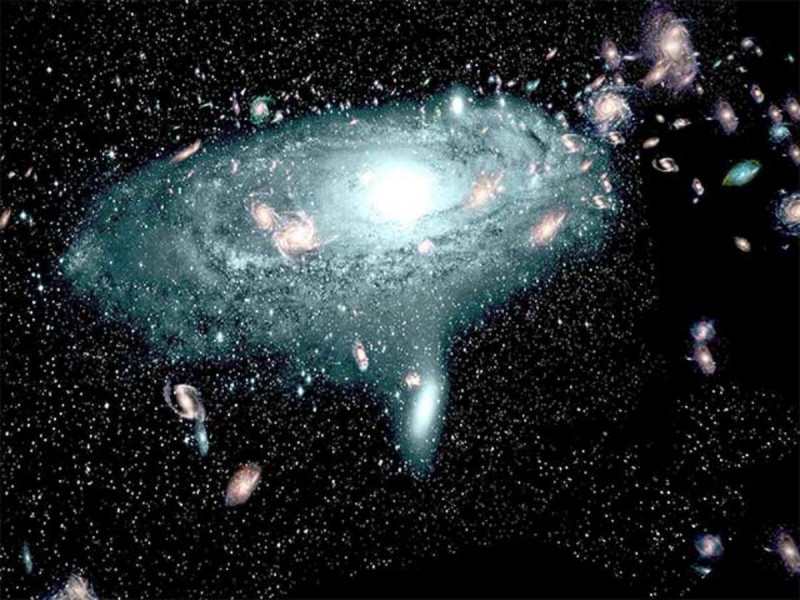
The universe is a vast expanse, filled with galaxies, stars, and planets. However, amidst this celestial grandeur, there exist mysterious and colossal empty spaces known as cosmic voids. These vast expanses, devoid of galaxies and matter, present a fascinating subject of study for astronomers and cosmologists. In this article, we will delve into the intriguing world of cosmic voids, exploring their formation, characteristics, and significance in understanding the universe's overall structure.
What are Cosmic Voids?
Cosmic voids are immense regions in the universe characterized by an almost complete absence of galaxies and matter. These voids can stretch for millions of light-years, creating a stark contrast to the densely packed regions where galaxies cluster together. The nature and properties of cosmic voids have captured the attention of astronomers for decades.
How Are Cosmic Voids Formed?
The formation of cosmic voids is a complex process influenced by several factors. One key factor is the expansion of the universe. As the universe expands, galaxies move away from each other. In regions with a slightly higher density of matter, gravity pulls galaxies together, leading to galaxy clusters. In contrast, regions with a lower density of matter become voids, as the galaxies move further apart due to cosmic expansion.
The Enormous Size of Cosmic Voids
Cosmic voids are not just large; they are mind-bogglingly enormous. Some of the largest voids span hundreds of millions of light-years. The sheer scale of these empty spaces is awe-inspiring and highlights the vastness of the universe.
Measuring Cosmic Voids
Measuring cosmic voids is a challenging task for astronomers. They employ various techniques, including redshift surveys and galaxy distribution analysis, to map and characterize these vast expanses accurately. The data gathered from these observations provide insights into the distribution of matter on the largest scales.
The Distribution of Matter in Cosmic Voids
Although cosmic voids are predominantly empty, they are not entirely devoid of matter. They contain a sparse amount of gas and dark matter. The distribution of this matter within voids offers valuable clues about the underlying structure of the universe and its evolution over time.
Cosmic Voids and Dark Energy
The study of cosmic voids is closely linked to our understanding of dark energy, a mysterious force responsible for the accelerated expansion of the universe. Some theories suggest that the voids' emptiness might be influenced by the repulsive effects of dark energy, causing galaxies to move apart at an accelerated rate.
The Cosmic Web: A Network of Voids and Filaments
Cosmic voids are not isolated entities; they are interconnected through an intricate network known as the cosmic web. The cosmic web consists of vast filaments of galaxies that surround and connect these voids. Understanding this web-like structure is vital for comprehending the overall large-scale structure of the universe.
The Influence of Cosmic Voids on Galaxy Formation
Cosmic voids play a crucial role in the formation and evolution of galaxies. The low-density environment of voids allows smaller structures to merge and grow into larger galaxies. Studying this process helps us grasp the factors that govern galaxy formation and evolution.
Exploring Cosmic Voids: Observations and Surveys
Astronomers utilize sophisticated telescopes and advanced survey techniques to explore cosmic voids in detail. These observations provide valuable data that contribute to our knowledge of the universe's evolution and the underlying physical principles at work.
The Importance of Studying Cosmic Voids
Studying cosmic voids is not just an astronomical curiosity; it has significant implications for cosmology and our understanding of the universe's fundamental properties. Insights gained from void research contribute to our knowledge of dark energy, galaxy formation, and the large-scale structure of the cosmos.
The Future of Cosmic Void Research
As technology advances, so does our ability to study cosmic voids in greater detail. Future missions and telescopes will likely bring even more exciting discoveries, leading to a deeper understanding of these vast and mysterious regions. cosmic voids represent awe-inspiring spaces between galaxies, shaping the overall structure and evolution of the universe. The study of these gigantic empty spaces has expanded our understanding of cosmology, dark energy, and galaxy formation. As we continue to explore the cosmos, cosmic voids will undoubtedly remain a captivating subject of research and discovery.
Understanding Cookies: How Web Browsers Track Your Online Activity
Comparing the Top Web Browsers: Chrome, Firefox, Edge, Safari, and More
India developing 400 km Long-Range Air Defense Missile System